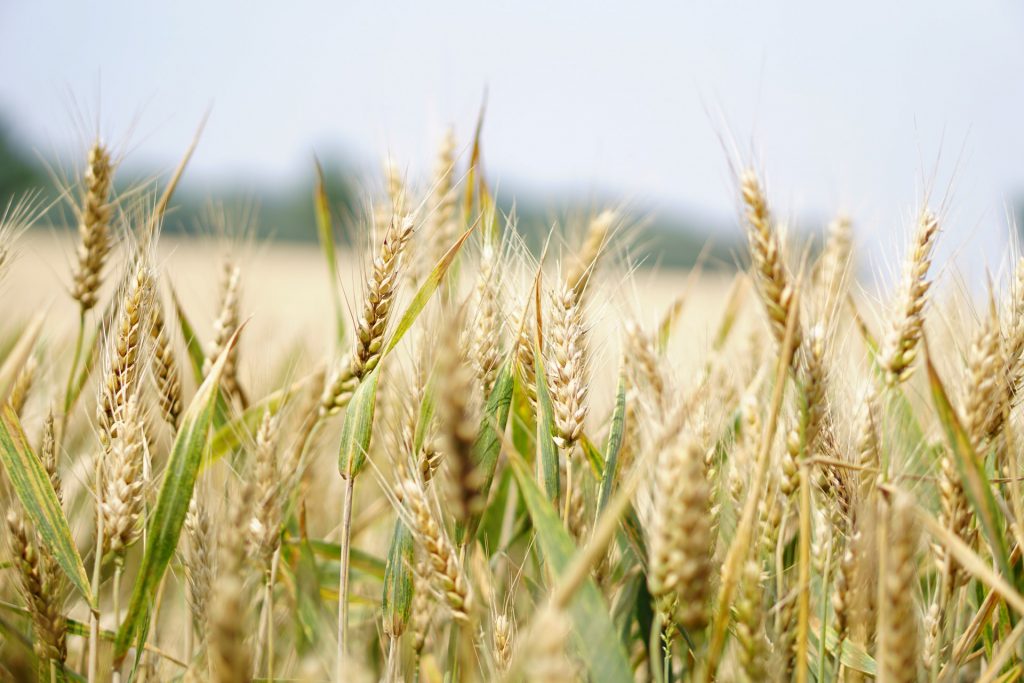Ancient grains are a modern trend. Although seemingly paradoxical, many ancient grains have skyrocketed into recent popularity. Grains like teff, kamut, spelt, amaranth, and quinoa are making an appearance in everything from restaurant dishes to popular cereal brands.
By Rebecca Brundidge
What is all the new buzz about? According to the Whole Grains Council, the term “ancient grains” encompasses a broad category of grains, pseudo-grains, and seeds that have remained widely unchanged for the last several hundred years. This is a stark contrast to modern wheat, which mainly stems from varieties created in the 1960s. Ancient grains hold a variety of nutritional benefits, and several are naturally gluten-free.
Here are five noteworthy grains making a comeback.
Kamut
This ancient grain is the trademark name of the khorasan wheat variety. Kamut, the Egyptian word for wheat, is about three times the size of typical modern wheat. It is known for its higher protein content, healthy fats, zinc, and easy digestibility. It has a nutty and buttery taste and is often seen in a wide range of foods – from pasta to bread to baby food. Kamut is not gluten-free; however, some people who are gluten intolerant toward modern wheat varieties have reported they are able to consume this ancient grain without a problem.
Quinoa
Quinoa has gained immense popularity within the last few years. It is one of the most expensive ancient grains due to a relatively low supply and increasing demand. Quinoa is included in many foods from granola to breads, and it is often marketed toward those living a health-conscious lifestyle. Furthermore, the grain is naturally gluten-free and often used as wheat substitutes for gluten-free products. Quinoa is technically a seed in the same family as beets and spinach and comes in black, white, and red varieties. It contains folate, protein, healthy fats, antioxidants, and all of the essential amino acids.
Spelt
Spelt is a species of wheat often found in breads, bagels, and pasta. It was widely cultivated until the mechanization of the harvesting process favored the modern wheat variety. However, spelt is making a comeback today due to its nutritional benefits and its similarity to modern wheat—they are so similar that spelt is often used in recipes as a replacement for modern wheat. Spelt is higher in protein than modern wheat and supplies a good source of niacin and vitamin B6 as well as minerals like iron, zinc, and phosphorous. Search food labels for “whole spelt” to make sure that the spelt used is in its whole grain form.
Teff
Teff is an ancient grain popular in an Ethiopian flatbread called injera. The name comes from the Ethiopian root “tff” which translates to “lost.” The kernel is roughly 1/150 the size of wheat grain and has a sweet, pleasant taste. It is often cooked whole into oatmeal or baked goods. Teff has the highest calcium content found in ancient grains. It is also high in vitamin C and a resistant starch – a type of dietary fiber that excels in promoting satiety. It is also gluten-free.
Amaranth
Amaranth, like quinoa, is actually a pseudo-grain that is naturally gluten-free. It boasts a higher protein content and a higher level of all essential amino acids than most grains. It is also high in calcium, iron, magnesium, phosphorous, and potassium. Studies show it may help reduce cholesterol levels by inhibiting an enzyme needed for cholesterol production. Amaranth can be found and included in baked goods, cereals, and crackers. It is popularly sold as a street food in South America as a popped snack, like popcorn.
Keep a lookout for ancient grains in the grocery store and your favorite restaurants. Ancient grains are quickly gaining popularity and offer many nutritional benefits over modern wheat. They are also a good choice for vegetarians and vegans, as they provide a source of plant-based protein and essential amino acids. There are more ancient grains than those included above. So, do a little research, and find which ones work best for you.
When eating out, opt for whole grain choices like these to boost the nutrition of any meal.

